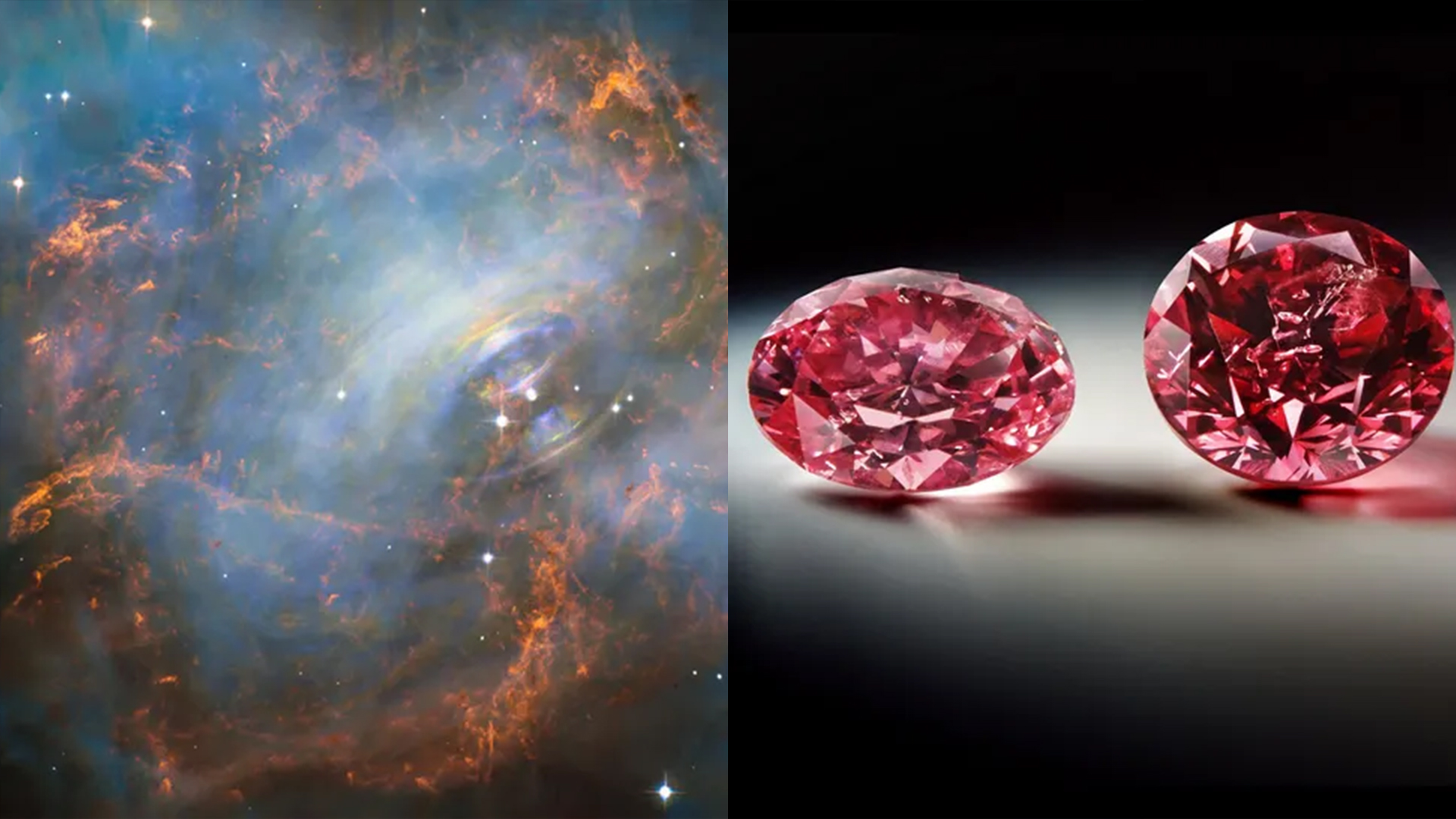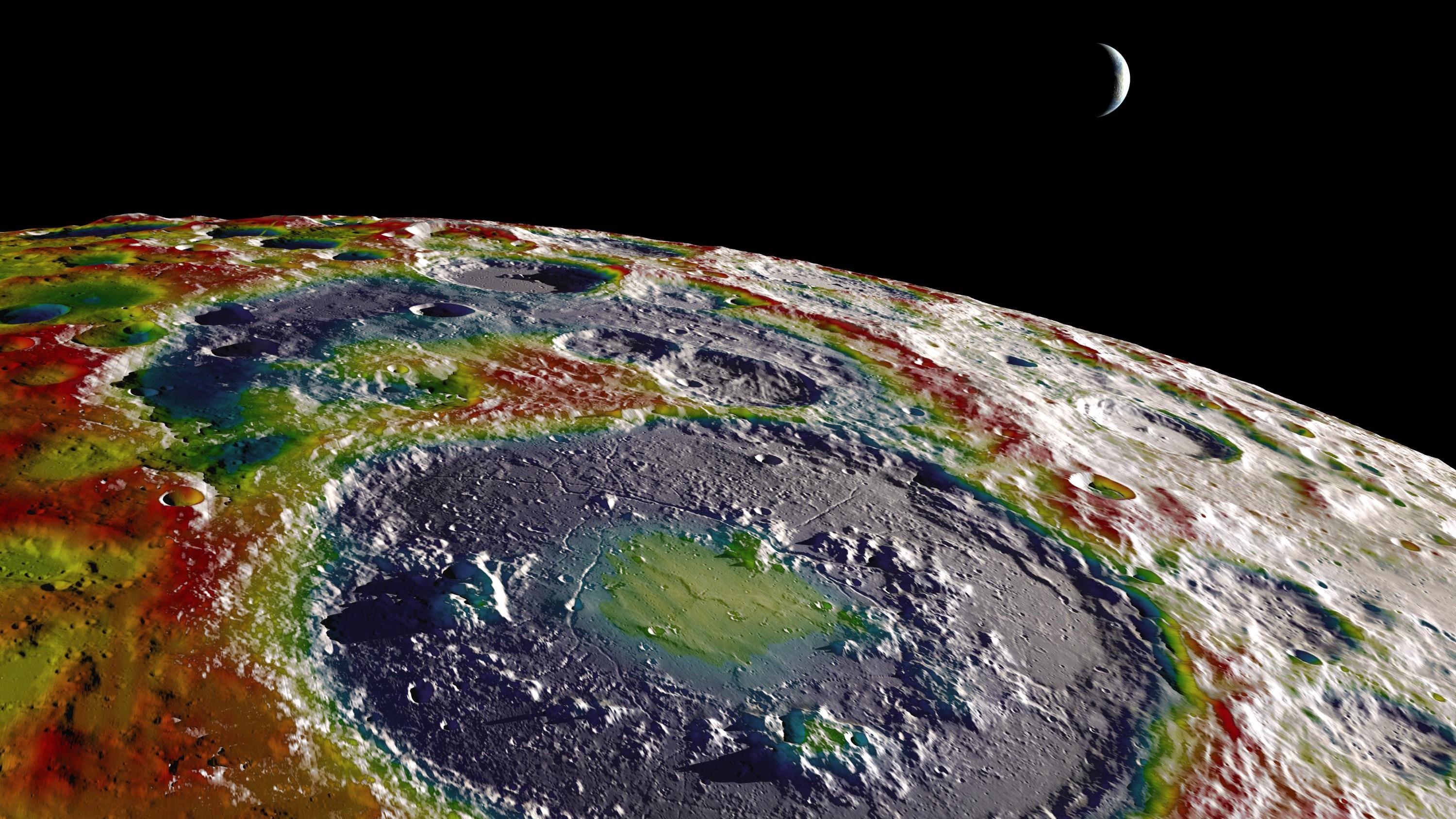Science news this week: Pink diamonds and nuclear 'pasta'
Sept. 24, 2023: Our weekly roundup of the latest science in the news, as well as a few fascinating articles to keep you entertained over the weekend.

This week in science news, we discovered how most of the world's pink diamonds formed, cooked up some nuclear 'pasta' in dead stars and watched a slime-covered 'penis' mushroom do its thing.
If you picture a diamond, one that is crystal clear usually springs to mind, but Australia's Argyle formation produces pink diamonds. We now know their distinctive color comes from the breakup of the planet's first supercontinent 1.3 billion years ago. More recently, just 66 million years ago, the Cretaceous-Paleogene mass extinction led to the loss of three-quarters of Earth's species. But one thing that did survive was flowers — and they thrived because of it.
Out of the animal kingdom came news of a gigantic alligator gar, which despite its name has nothing to do with the reptilian snappers. They are, however, very big, with one hauled in from a Texas reservoir clocking in at a massive 283 pounds (128 kilograms) — possibly smashing a pair of world records dating back to 1951. The gar-gantuan fish was released safely back into the waters. Staying safe in the water was clearly a hot topic in animal news this week, as the other big stories were crocodiles allegedly saving a dog from being attacked, and a scientist saving a snake from choking on a fish.
From the aquatic to the archaeological, where scientists in Zambia discovered what is believed to be the oldest wooden structure in the world, dating to 476,000 years ago. If the dating is correct, it means that woodworking might predate the emergence of our own species, Homo sapiens. From more recent history, weapons and lost treasures have been unearthed, with an early medieval warrior discovered in Germany, two rare Roman cavalry swords found in the U.K., and a cache of 'secrets' found inside a sunken underwater temple and sanctuary in Egypt.
In health news, a new analysis of screening tests for four types of cancer suggests that on average only one actually increases life span, but not all scientists agree.
Nuclear 'pasta' doesn't sound like the most appetizing meal, but in this case we're talking about a celestial treat rather than a culinary one, where fundamental particles are twisted into strange 'pasta' shapes in the extreme hearts of neutron stars. Elsewhere in space, we found out what could be causing our galaxy to warp, while the James Webb Space Telescope treated us to a picture of rainbow 'lightsaber' shockwaves shooting out of a newborn star. When it comes to shooting things, the U.S. Space Force could have shot itself in the foot following the launch of a surveillance satellite, as it may have punched a hole in the upper atmosphere. Fortunately the hole won't pose a threat to people on Earth's surface as it naturally closed up within a few hours. Phew.
Finally, we couldn't let you go without showing you this mesmerizing time-lapse of a slime-covered penis mushroom that smells like rotting flesh. You're welcome.
Get the world’s most fascinating discoveries delivered straight to your inbox.
Follow us on WhatsApp
If you can't wait for the weekend to get your fill of science news, you can now get the latest developments directly to your phone by following our Live Science WhatsApp Channel. It's the best way to get our expert reporting on the go, but don't worry if you don't use WhatsApp, you can also find us at Facebook, X (formerly Twitter), Flipboard, Instagram, TikTok and LinkedIn.
Picture of the week
A research vessel off the coast of the Galapagos Islands recently spotted this rarely seen, ghostly squid with weak, suckerless tentacles floating in the deep. Unlike other squid, Grimalditeuthis bonplandi has feeding tentacles with no suckers, so while other cephalopods whip and thrash about, grabbing their prey with their tentacles and trapping them with their suckers, G. bonplandi is thought to be a graceful feeder that undulates its tentacles to lure small shrimp and other crustaceans to their demise.
It's only the second time this elusive species has ever been filmed alive, and you can watch its majestic dance here. If you are still in the mood for more serene cephalopods, this stunning photo of an extremely rare '7-arm octopus' was recently taken near the Washington coast.
Sunday reading
- The human brain is remarkably good at adjusting to different light conditions, but what about on another planet?
- 'Modest, humble, and uncommonly smart': Meet the Soviet mathematician who quietly solved the mystery of planet formation.
- The sun's outer atmosphere was captured at previously impossible extreme ultraviolet wavelengths thanks to a last-minute engineering hack.
- These remarkable places look like they were dreamed up in science fiction, but they really do exist on Earth.
- The green comet Nishimura survived its superheated slingshot around the sun earlier this week, but will we get another chance to see it?
- Glass has unique properties, but is it a solid or a liquid?
- Everything you need to know about El Niño explained.
- Scientists can now create realistic human embryo models in the lab — is it time to rethink our legal definition of a human embryo?
- Keep an eye out for the planet Mercury, which reaches its highest point in the sky this weekend. Here's how to see it.
- Can we trust our earliest memories, or are they unreliable?
And finally…
Between 1969 and 1972, the U.S. landed 12 astronauts on the moon as part of the Apollo program, which was formed primarily to beat the former Soviet Union to the moon in the heat of the Cold War. Now, more than 50 years after the first human landed on the moon, interest in visiting our celestial neighbor is once again skyrocketing.
This time, though, spacefaring nations are eyeing the lunar south pole, which has become a hotspot for both short- and long-term space exploration. So why are Russia, India and other countries racing to the lunar south pole?

Alexander McNamara is the Editor-in-Chief at Live Science, and has more than 15 years’ experience in publishing at digital titles. In 2024 he was shortlisted for Editor of the Year at the Association of British Science Writers awards for his work at Live Science. He has previously worked at New Scientist and BBC Science Focus.




